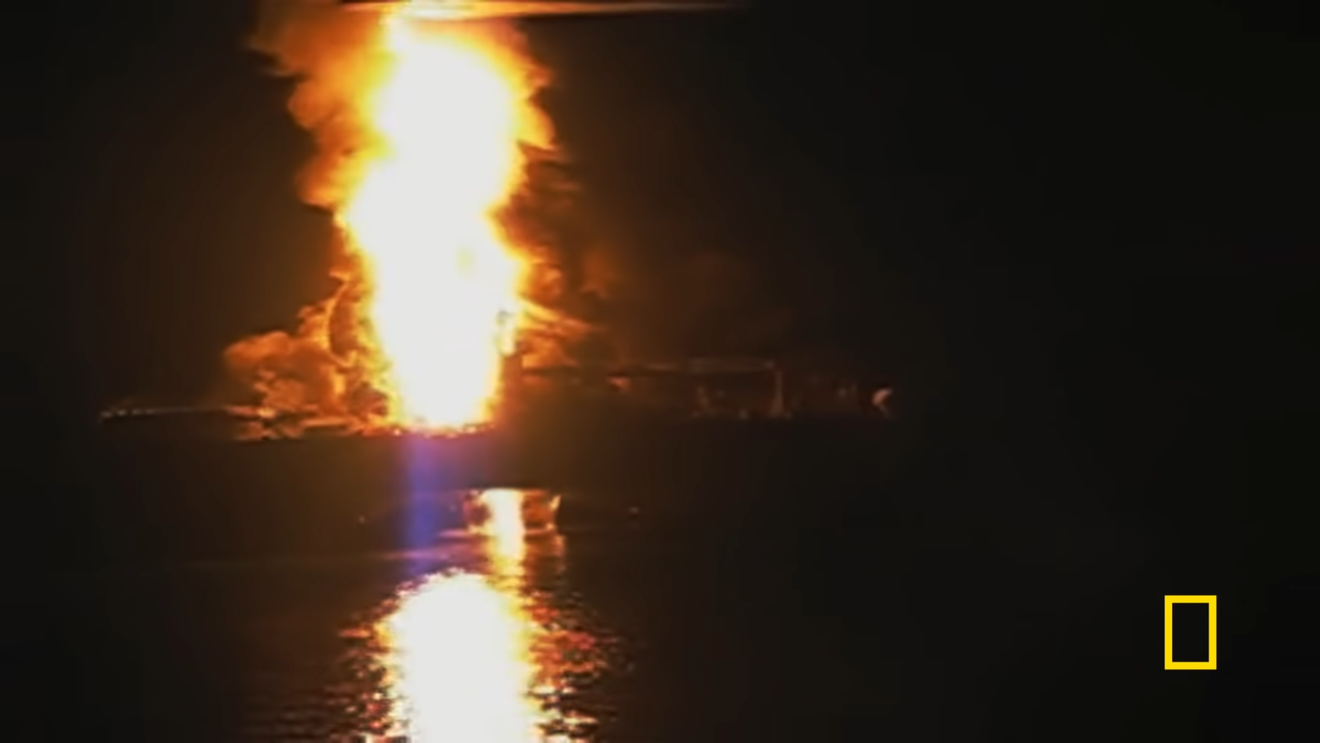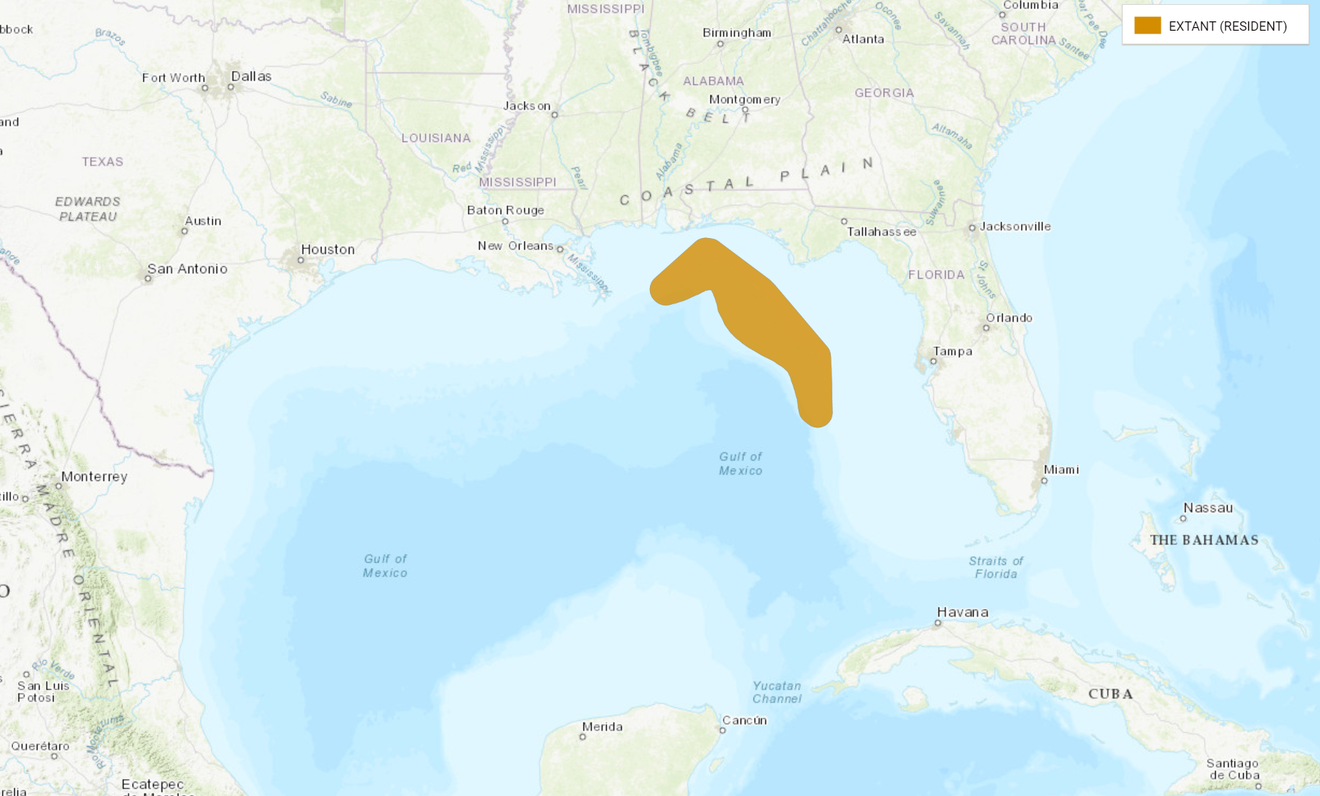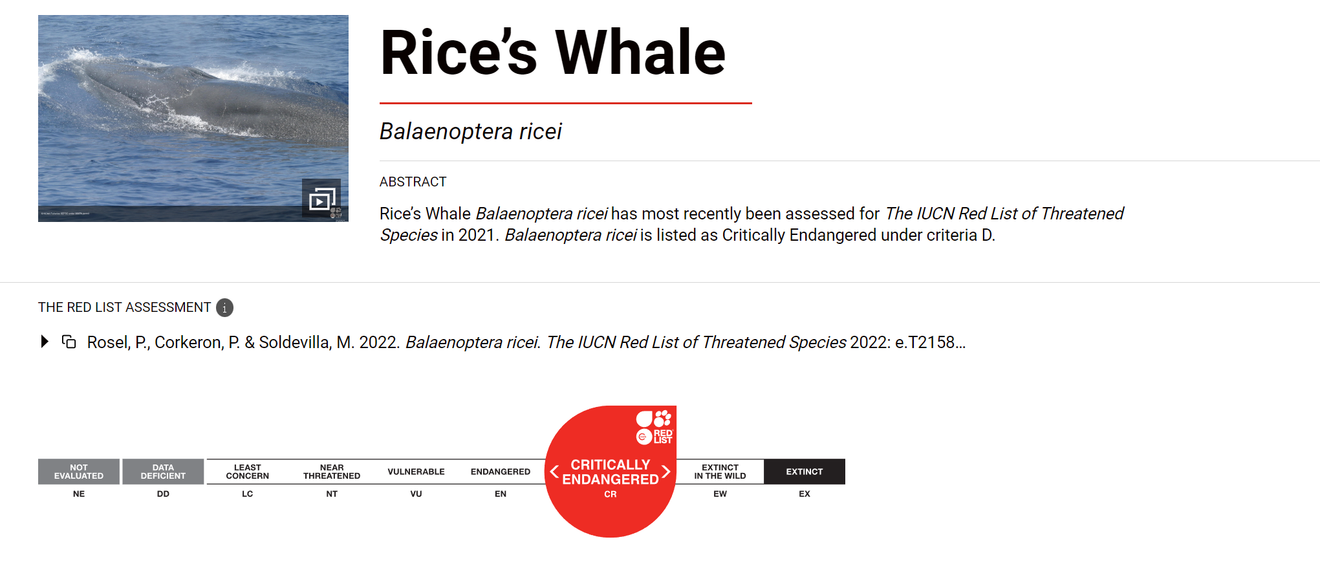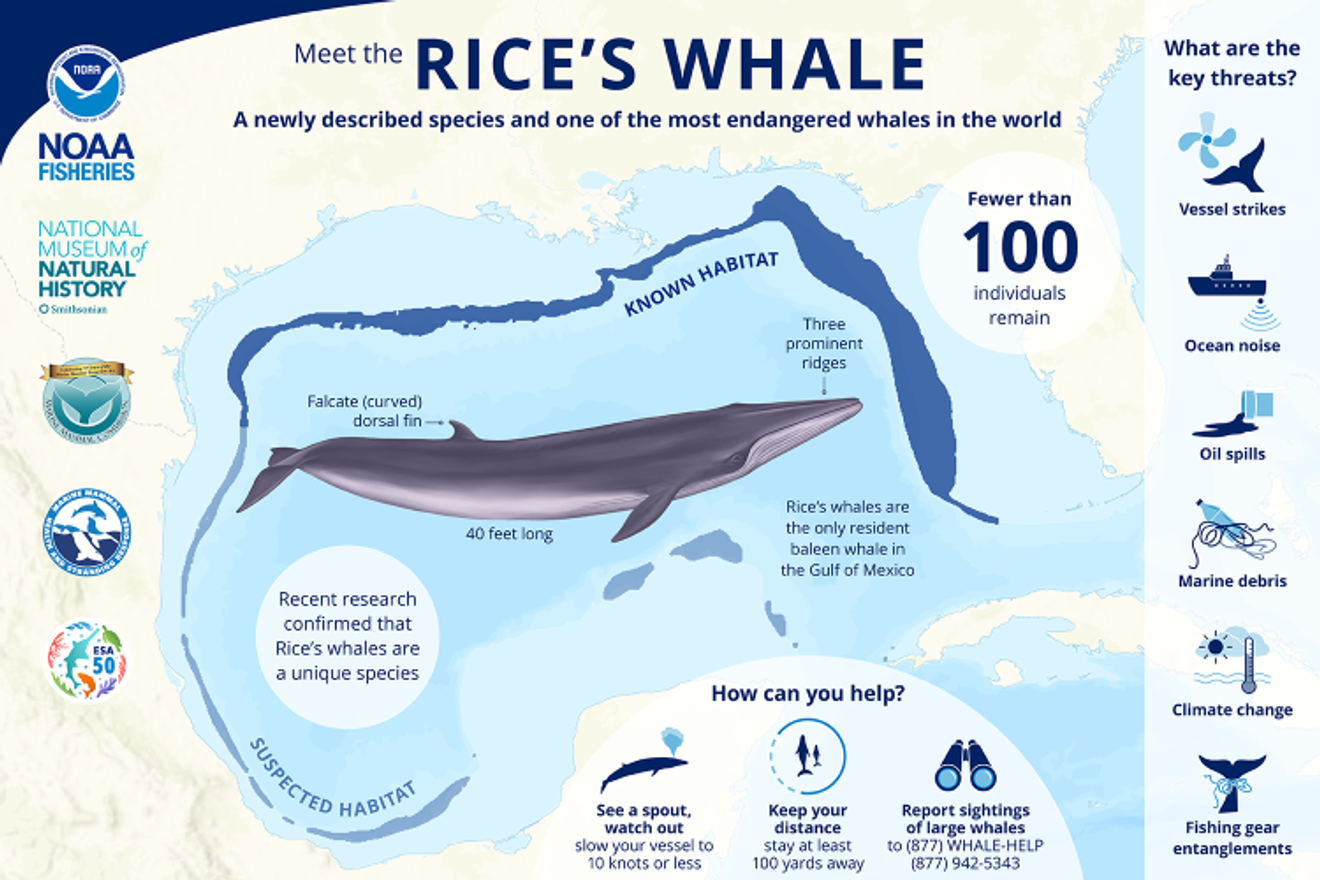Subject
- #Oil Spill
- #Endangered Species
- #Deepwater Horizon
- #Rice's Whale
- #Endangered Animals
Created: 2024-02-07
Created: 2024-02-07 15:58
Have you ever heard of the Rice's whale? Since it has only been named for about 3 years, many people may not be familiar with this name. Rice's whale was previously classified as a subspecies of the Bryde's whale, but in 2021, it was reborn as a new species, 'Rice's whale,' based on research by the National Oceanic and Atmospheric Administration (NOAA) in the United States.

IUCN
This Rice's whale, which can reach a length of about 13 meters and weigh a whopping 27 tons, was unfortunately classified as an endangered species just about a year after its new name was given. According to the International Union for Conservation of Nature (IUCN), the current estimated population of adult Rice's whales is only 26. Experts believe that the Deepwater Horizon oil spill that occurred in 2010 is the reason behind such a small population.

National Geographic YouTube channel ‘Deepwater Horizon In Their Own Words (Full Episode) | In Their Own Words’ video capture
On April 20, 2010, an explosion occurred at the Deepwater Horizon oil drilling rig in the Gulf of Mexico, USA. The explosion, caused by engine overload, resulted in a fire. Although efforts were made to extinguish the fire, the rig sank into the sea 36 hours after the explosion, and the drilling pipe fell sideways, causing a massive oil spill that continued unabated. Although the incident occurred in April, it took until September 19th, about 5 months later, to completely seal the leaking oil well. During this period, a large amount of oil was spilled into the sea, causing immense damage to marine life in the surrounding area.

IUCN
Rice's whale is one of the marine creatures that suffered from this accident. The Gulf of Mexico, where Rice's whales inhabit, was the location of the accident, leading to particularly severe damage. Since the name 'Rice's whale' had not yet been given at the time of the incident, the exact extent of the damage is unknown, but experts estimate that the Deepwater Horizon accident reduced the Rice's whale population by about 22%.

IUCN
Rice's whale has been designated as Critically Endangered (CR) by the International Union for Conservation of Nature (IUCN). This means that it is highly likely to face extinction in the near future. NOAA is making various efforts to prevent the extinction of Rice's whales.

NOAA
Large whales, including Rice's whales, are at high risk of collisions with ships. Because of their nature, they need to surface to breathe, leading to collisions with vessels. NOAA recommends measures such as speed restrictions for large vessels and adjustments to ship routes to avoid collisions with whales. They also point out the issue of ocean noise, which interferes with the communication of whales, who use ultrasound. If the ocean noise problem becomes severe, it not only restricts whale communication but can also cause stress, making it a pressing issue that needs to be addressed. NOAA has revised guidelines for assessing anthropogenic noise that affects marine mammals.
In addition to this, they are also working on rescuing animals in danger, conducting health checks, and researching the causes of their distress. NOAA also plays an educational role, raising public awareness about the dangers faced by Rice's whales and other marine life.
With only 26 individuals remaining, we hope that the name Rice's whale will endure for a long time to come.
Comments0